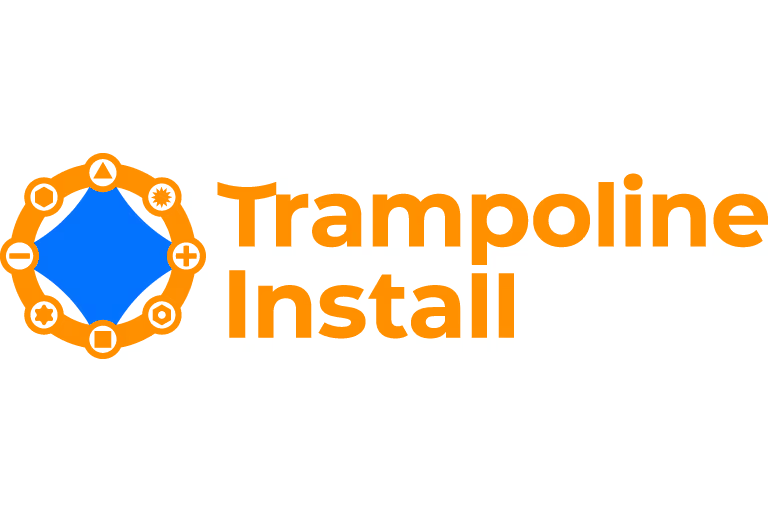Trampoline Safety Rules & Guidelines
Comprehensive Nationwide Safety Standards for Installation & Use
CRITICAL: The AAP and AAOS strongly discourage home trampoline use. Over 100,000 injuries occur annually.
Essential Safety Statistics
104,691
Emergency room visits from trampoline injuries annually (CPSC 2014)
90%
Percentage of injuries occurring in children ages 5-15
Federal Standards & Requirements
ASTM Standards Compliance
Standard | Description | Key Requirements |
ASTM F381-16 | Consumer Trampolines | • Minimum bed size: 3,300 in² (21,300 cm²) • Minimum height: 20 inches • Not recommended for children under 6 • No ladders included • Frame padding required |
ASTM F2225 | Trampoline Enclosures | • Minimum net height requirements • Impact testing requirements • Bottom connection requirements • Weather resistance standards |
CPSC Guidelines
Trampolines must include frame, bed, suspension system, frame padding, information packet, and suitable markings
Warning labels must state trampolines over 20 inches are not recommended for children under 6
Padding must cover entire frame, springs, and hooks
Regular safety inspections required
Critical Safety Rules
The Non-Negotiable Rules
1. ONE JUMPER AT A TIME - 75% of injuries occur with multiple users
2. NO CHILDREN UNDER 6 - Required by ASTM standards
3. NO SOMERSAULTS OR FLIPS - Leading cause of paralysis and death
4. CONSTANT ADULT SUPERVISION - Never leave children unattended
5. REMOVE LADDER AFTER USE - Prevents unsupervised access
Installation Requirements
Location & Setup
Place on level ground surface (preferably grass, never concrete)
Maintain 3-5 feet clearance around perimeter
Minimum 24 feet overhead clearance
Away from trees, fences, structures, and other hazards
Consider ground-level installation to reduce fall impact
Required Safety Equipment
Shock-absorbing frame padding covering all springs, hooks, and frame
Safety net enclosure (while not proven to reduce injuries, often required by insurers)
Weather-resistant materials meeting ASTM standards
Proper anchoring system for wind resistance
State-Specific Regulations
Note: While most states don't have specific backyard trampoline laws, several have regulations for:
- Trampoline Parks: New York, Virginia, Wisconsin, Utah have specific safety
- Childcare Facilities: Many states prohibit or restrict trampoline use in licensed childcare
- California Prop 65: Warning labels required for certain materials
Always check your local and state regulations for specific requirements.
Insurance & Liability Considerations
Homeowners Insurance Requirements
Notify your insurer BEFORE installing a trampoline
Coverage approaches vary:
- Some insurers cover with no restrictions
- Some require safety features (net, fence, etc.)
- Some exclude trampolines entirely
Additional premium typically $50-100 annually
Consider umbrella policy for extra liability protection
Trampolines are considered "attractive nuisances" - you may be liable even for trespassers
Medical Organization Recommendations
American Academy of Pediatrics (AAP)
Strongly discourages all home trampoline use
Safety equipment has not significantly reduced injury rates
Only acceptable in supervised training programs
American Academy of Orthopaedic Surgeons (AAOS)
No use for children under 6 years old
Competent adult supervision required at all times
Place jumping surface at ground level
Do not rely on safety nets for injury prevention
Safety Checklist for Installers
Pre-Installation Verification
- Trampoline meets ASTM F381-16 standards
- Enclosure meets ASTM F2225 standards (if applicable)
- Customer has verified homeowners insurance coverage
- Installation location meets all clearance requirements
- Ground is level and appropriate (grass preferred)
- All required safety equipment is present and properly installed
- All warning labels and safety instructions are clearly visible
- Customer has been educated on all safety rules and maintenance
Maintenance & Inspection Requirements
Regular Inspection Schedule
Before Each Use: Check for visible damage, proper padding placement
Monthly: Inspect all connections, springs, and frame integrity
Seasonally: Check for weather damage, replace worn components
Annually: Professional inspection recommended
Signs to Replace Equipment
Torn or worn jumping mat
Bent or broken frame components
Missing or damaged springs
Deteriorated safety padding
Damaged or torn safety net
Emergency Preparedness
In Case of Injury
1. Do not move injured person if neck or back injury suspected
2. Call 911 immediately for serious injuries
3. Keep emergency contact numbers posted near trampoline
4. Document all incidents for insurance purposes
5. Report product defects to CPSC at SaferProducts.gov
Legal Disclaimers & Waivers
Important: As an installer, consider:
Requiring customers to sign acknowledgment of safety rules
Documenting proper installation with photos
Providing written safety instructions and maintenance guidelines
Maintaining appropriate business liability insurance
Following all manufacturer installation specifications exactly
Disclaimer: This information is provided for educational purposes only. TrampolineInstall.com strongly recommends following all manufacturer guidelines, local regulations, and consulting with insurance providers before installation. The American Academy of Pediatrics and other medical organizations discourage home trampoline use due to injury risks.



